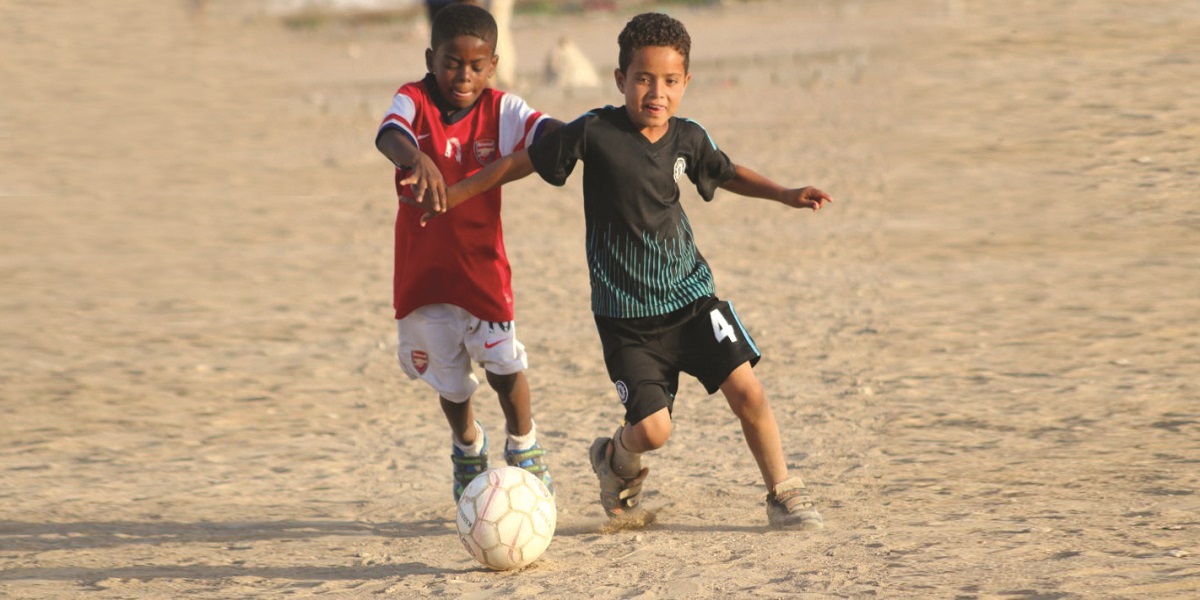There is an abundance of talented football players in Pakistan. Unfortunately, despite efforts by clubs and academies, that talent is rarely developed and nurtured into a world-beating final product.
Talent is like a flower, which needs the right environment to blossom. There are numerous factors that determine whether a player will develop into a top professional player, capable of playing alongside the likes of Neymar Jr, Sergio Ramos or Toni Kroos.
I would like to share a few practical ideas that can help create an environment to develop talent that can one day play alongside these global stars.
Access to footballs
We sometimes lose sight of the essence of what it takes to be a part of the top leagues in the world. The first and foremost is that a player must know how to master the ball. To be comfortable with controlling the ball, passing it, receiving it, dribbling and running with it.
With this premise in mind, picture a huge football field in Malir, Karachi. Now imagine a hundred passionate, talented and enthusiastic young children playing football on the ground with one or two footballs in the field.
This scene may intrigue optimism in a common man regarding the future of the sport in the country, given the number of children involved in the game.
However, the problem lies with the fact that there are only one or two balls shared amongst a hundred children.
In Brazil, a nation that has won five World Cup titles, you are likely to see futsal (played with a goalkeeper and four outfield players on tight pitches bordered by lines) courts in almost every neighbourhood of the country.
In this format, 10 players are playing at a time with one ball. A 10:1 ratio of player to the ball, who do you think will have more contact with the ball, the child playing in the futsal court in Sao Paulo or the child playing in Malir?
The answer is fairly obvious. With one ball per 10 players, the likelihood of receiving the ball, passing and dribbling it is much higher than 100 players to one or two balls.
The lack of access to footballs is one of the key deterrents to our talented players not being able to master the ball. It’s like expecting Ludwig van Beethoven to become a pianist by allowing him to play for only ten minutes a day.
One should not underestimate the importance of giving more affordable or free access to footballs to needy children.
When I started working as a coach at the Karachi United Academy (one of the leading football clubs of the metropolis), my first plea to the boys was about making sure they spend as much time with the ball at their feet as possible.
When I saw them look at each other in an embarrassed and confused manner, I asked how many of them had their own football, only one out of sixteen raised their hand.
If the footballing bodies want to help develop talent, they must to provide clubs and academies, free footballs at the very least.
Playing spaces
Karachi alone has over 70 public parks. The management of these parks usually forbids children to play there as they believe the ball may hurt a civilian strolling or sitting in the vicinity. Or the parks’ management also asks children not to play as it can damage the grass and other plants.
These reasons are valid. However, our authorities need to build enclosed futsal courts that restrict the ball from flying out of the area, so that children can play freely.
We don’t necessarily need huge investments to build large stadiums or state of the art facilities. Simple futsal courts with concrete surfaces and a safety net around them can accelerate the development of the sport.
After Brazil’s opening game victory against Croatia in the 2014 World Cup, Oscar described his goal by saying, “It was like something you might do in futsal, a lot of the squad started out playing futsal. When you get the chance, you shoot.”
Better diet
When I started coaching at the grassroots level, I distinctly remember making notes in my session planner after one of the practice sessions, detailing the lack of concentration levels of my players.
My frustration stemmed from the fact that they were phenomenally talented but seemed to lose focus quickly and struggled to grasp the instructions of the drill. Through conversations with the players and their parents, I soon learnt that most of them could only afford to eat one or two meals a day.
The players would attend football training in the afternoon after only one meal in the early hours of the morning that too in the shape of cake rusk and a quarter paratha, and be expected to comprehend highly complex drills that required problem-solving and high levels of concentration.
Nutrition is one of the most critical aspects of physical conditioning and cognitive function. Protein-rich foods increase tyrosine, dopamine and norepinephrine, which helps increase alertness.
Football is a brain game that requires high levels of focus and decision-making skills. The majority of young, aspiring football players from lesser privileged areas of the city do not get the required nutrition to be able to fully focus during training sessions, which greatly hinders their mental and physical development.
In 2018, I visited Aspire Academy in Doha, Qatar. It is the national academy of Qatar, financed by the government to give athletes the best possible chance of competing on the world stage.
The athletes at Aspire are provided with breakfast, lunch and dinner every day, designed by highly qualified nutritionists. Resultantly, Qatar went on to win the AFC Asia Cup in 2019.
Academies and clubs in Pakistan can barely afford to provide footballs to their players and here we are talking about providing them with three meals a day. Well, it doesn’t cost to dream!

















